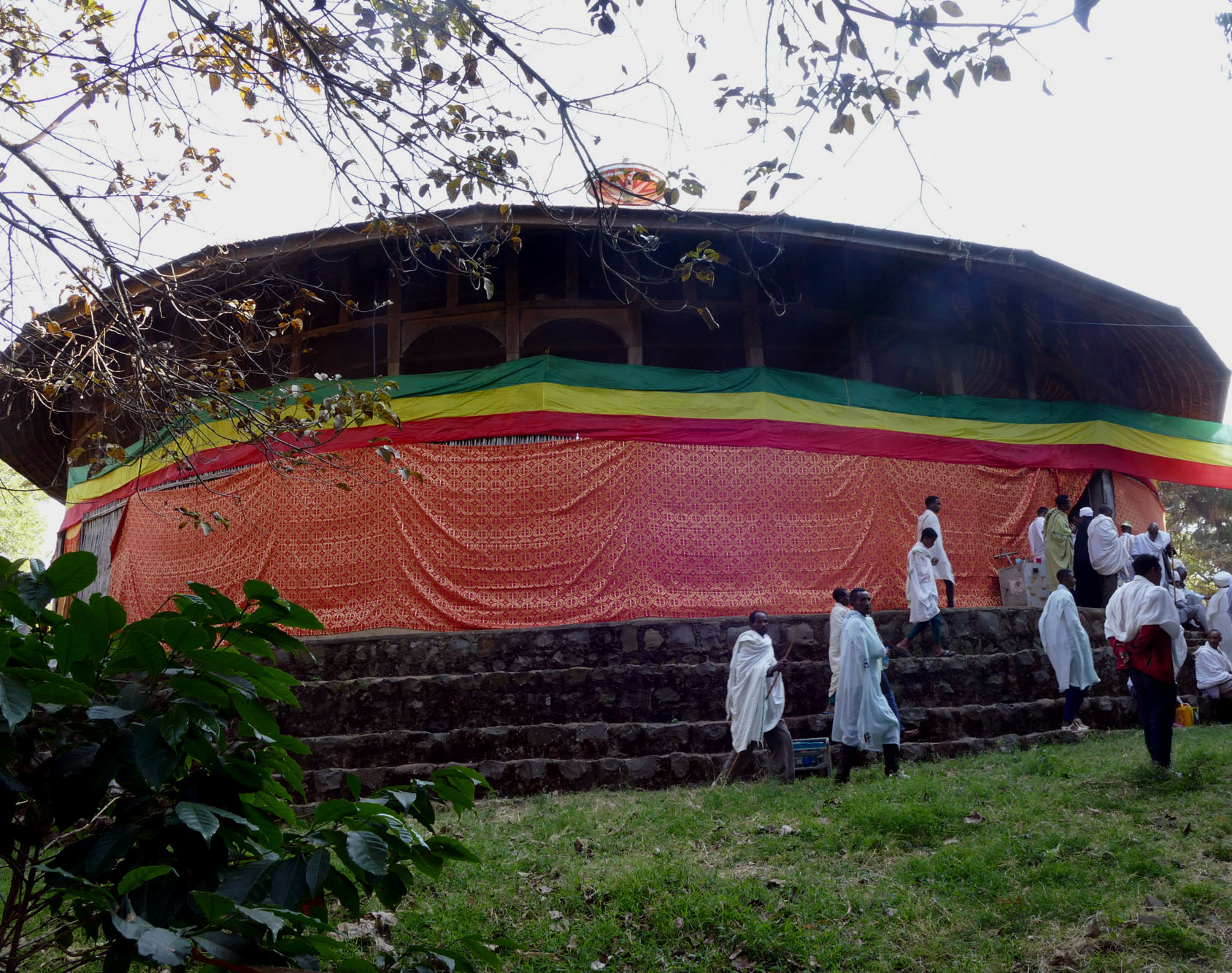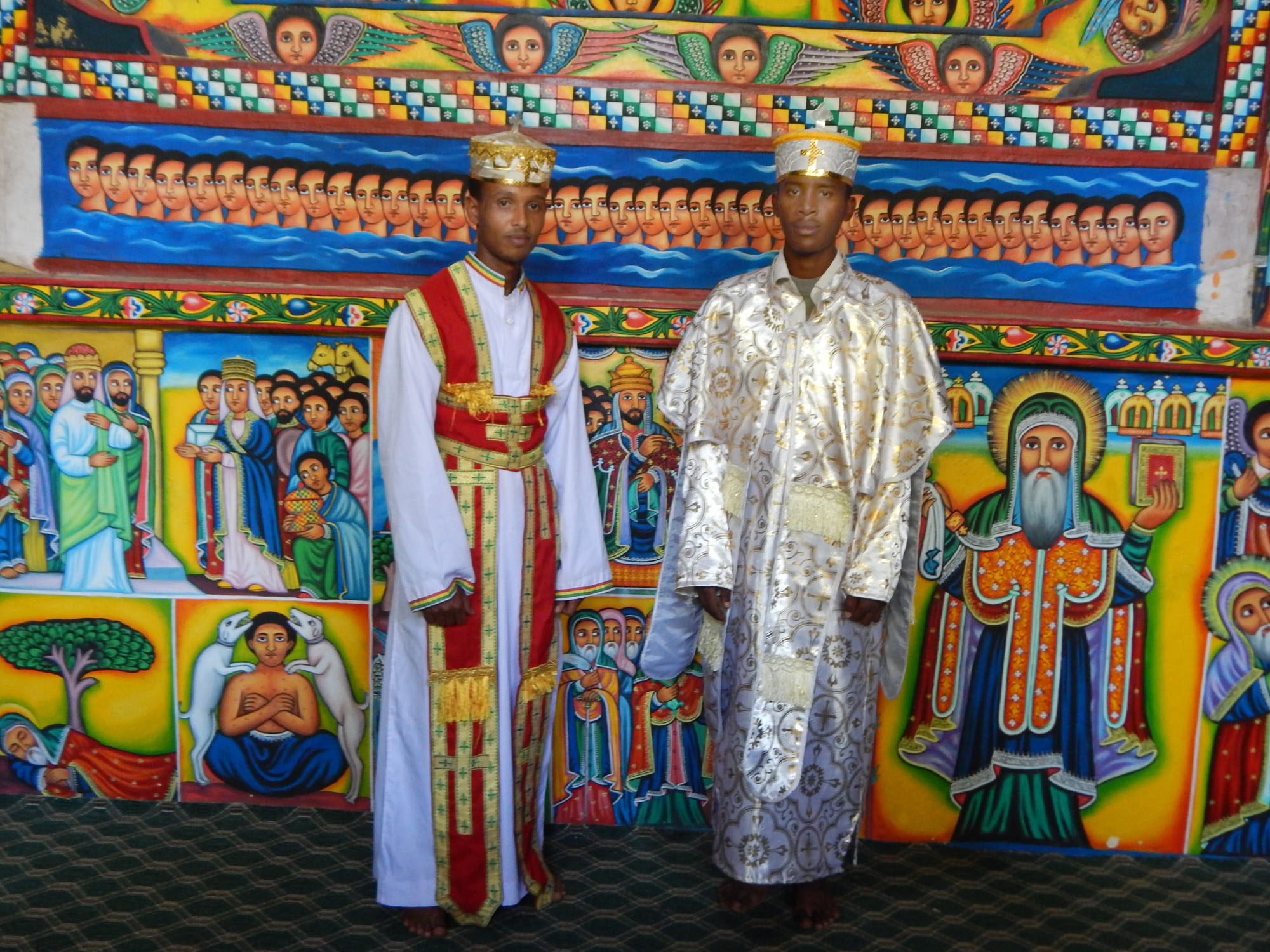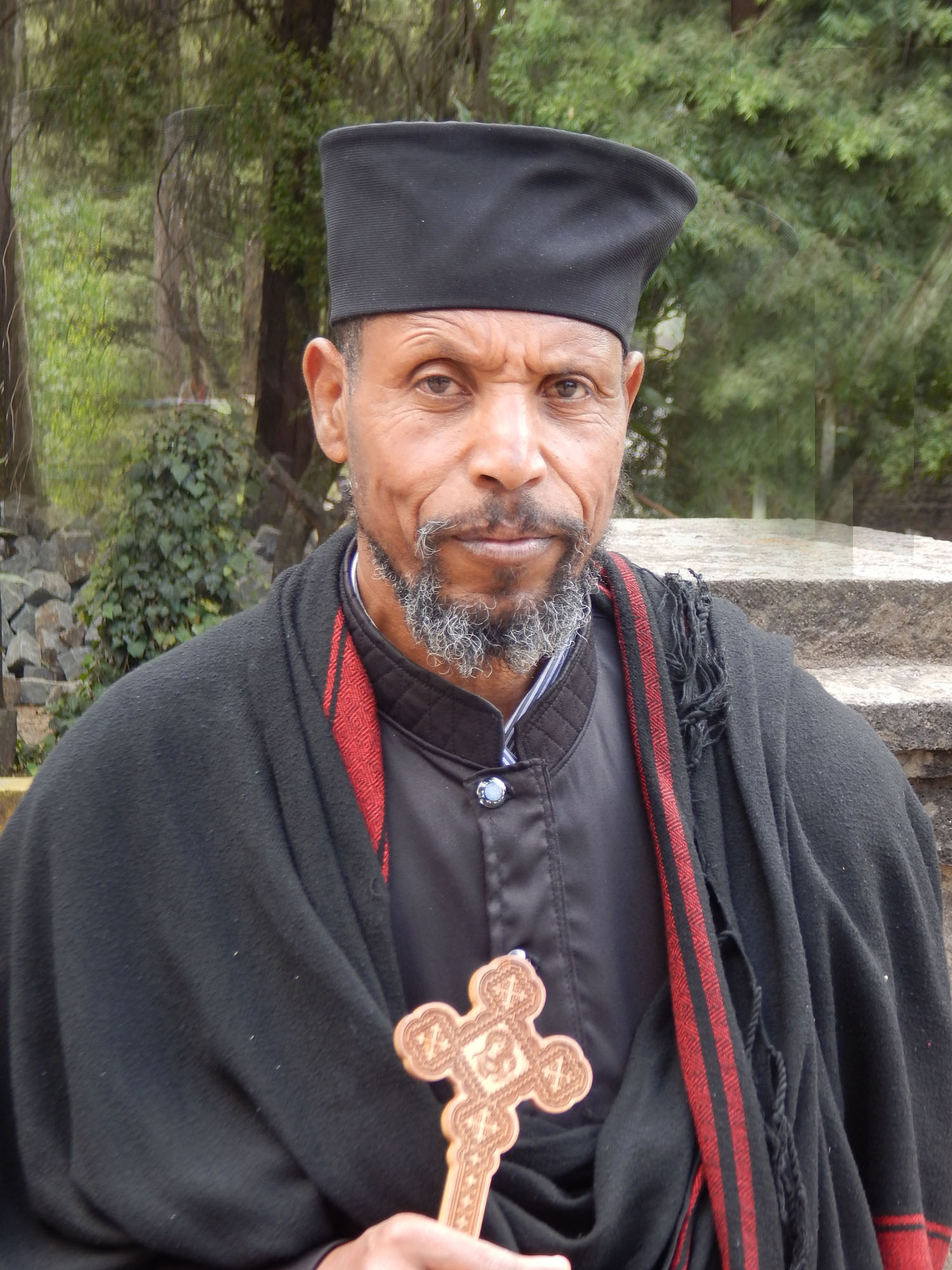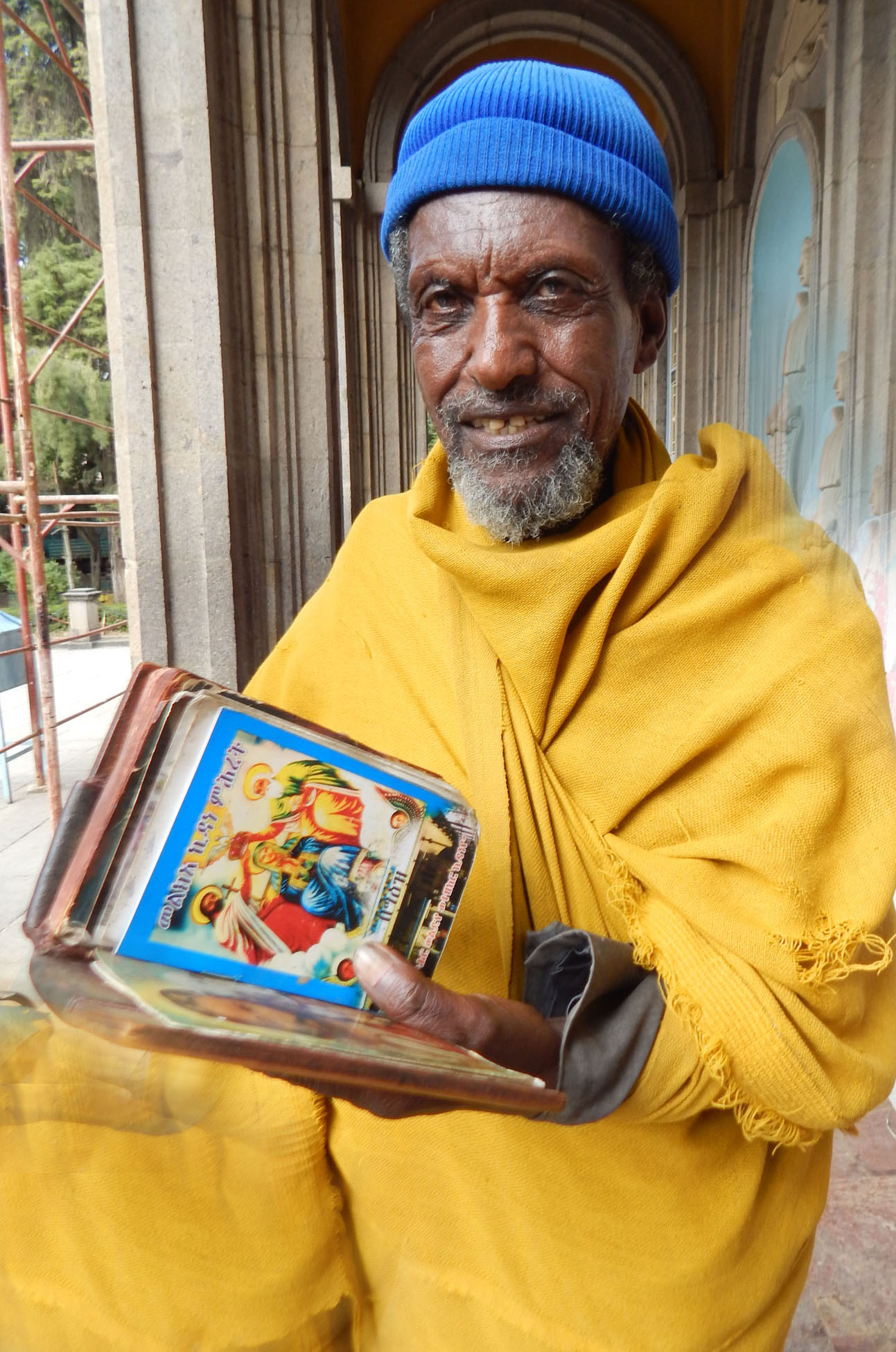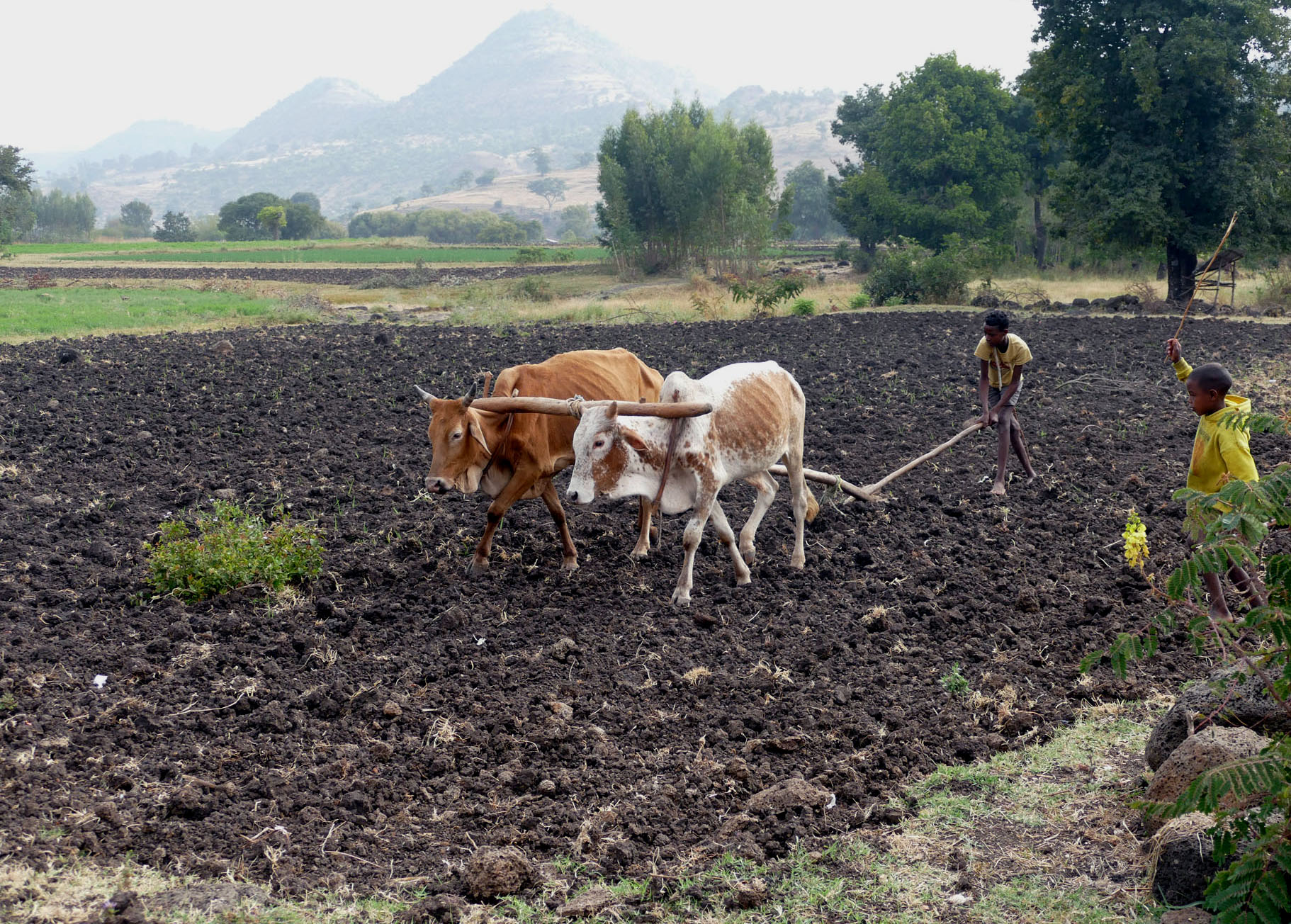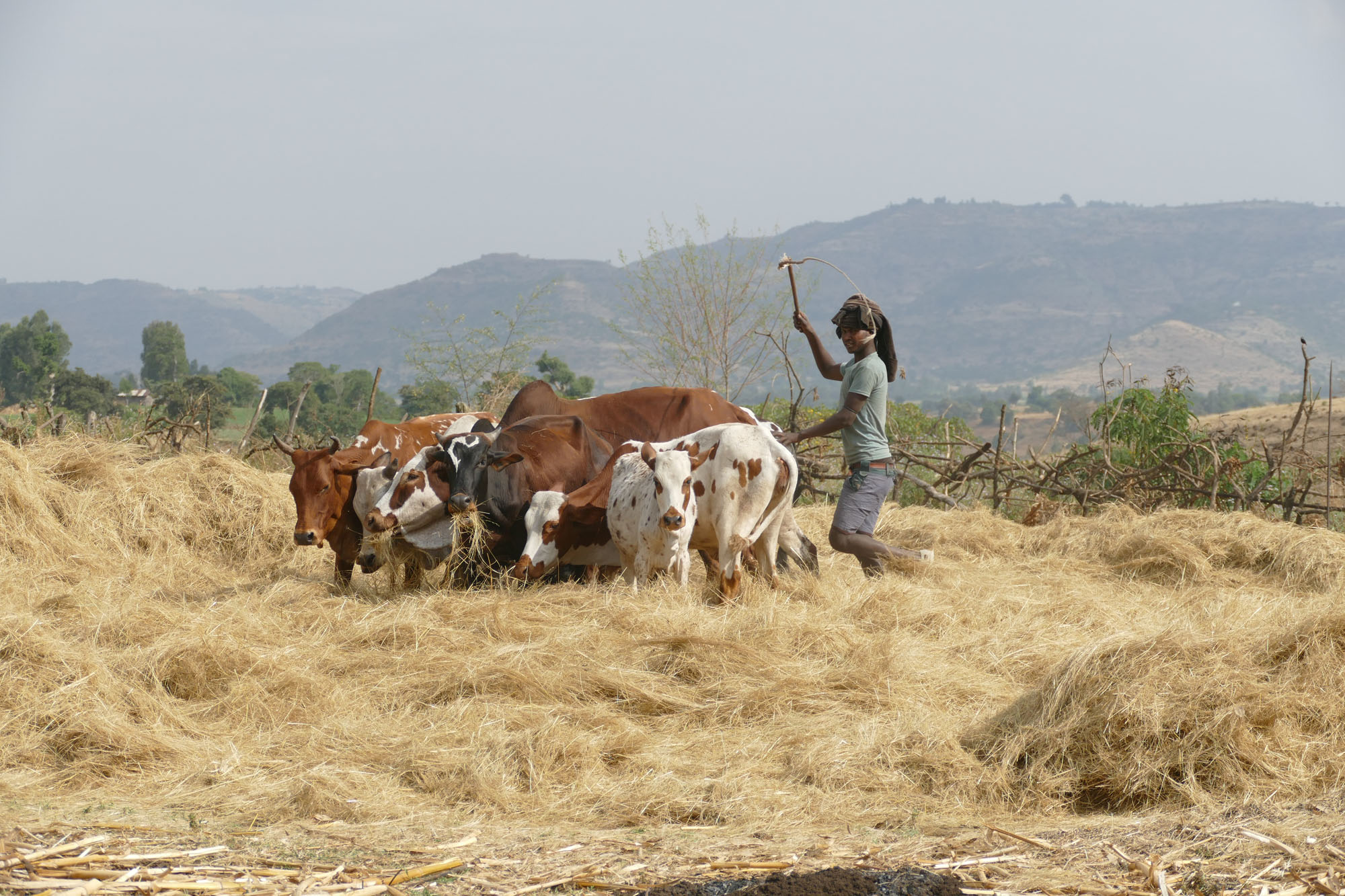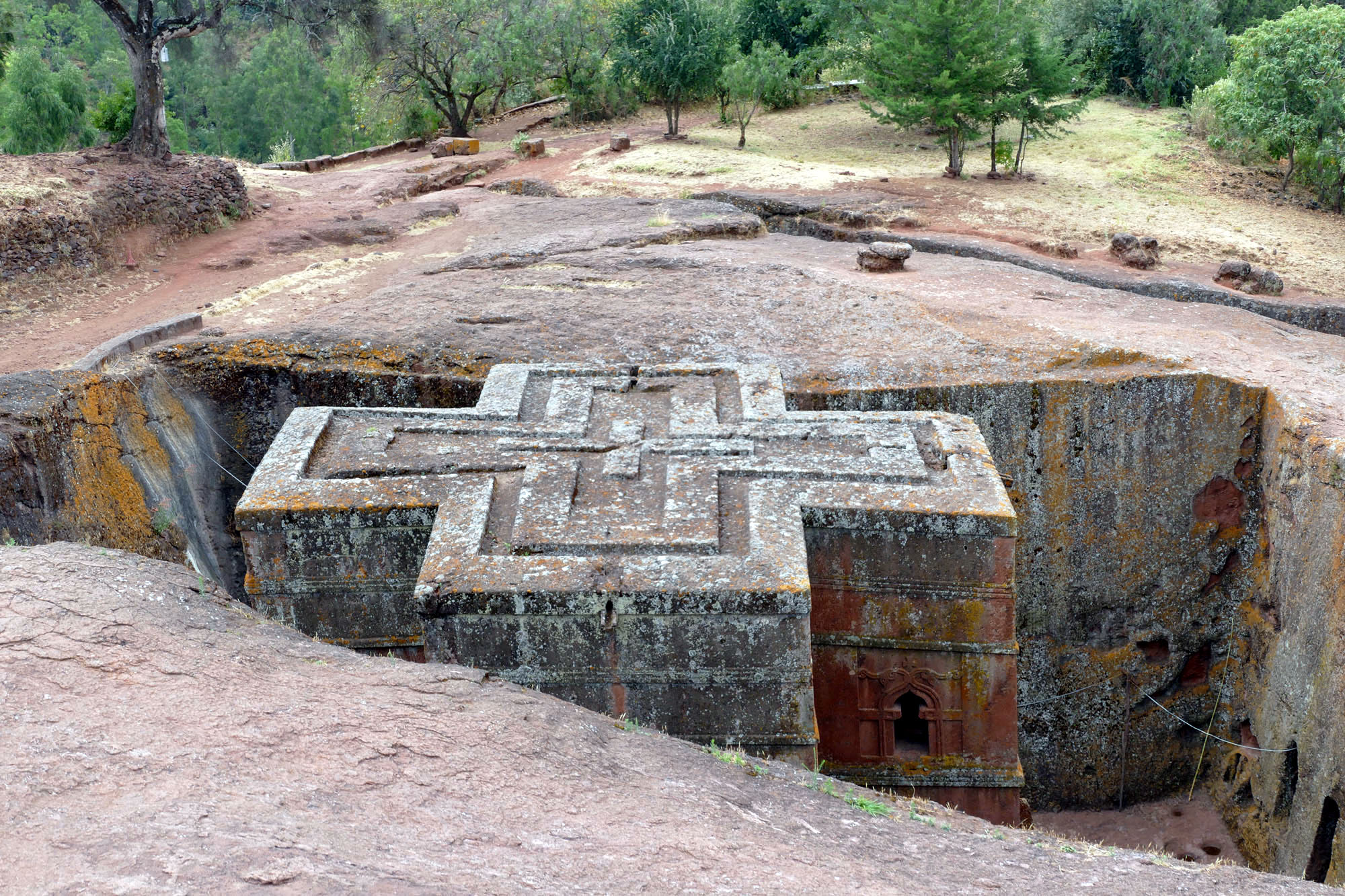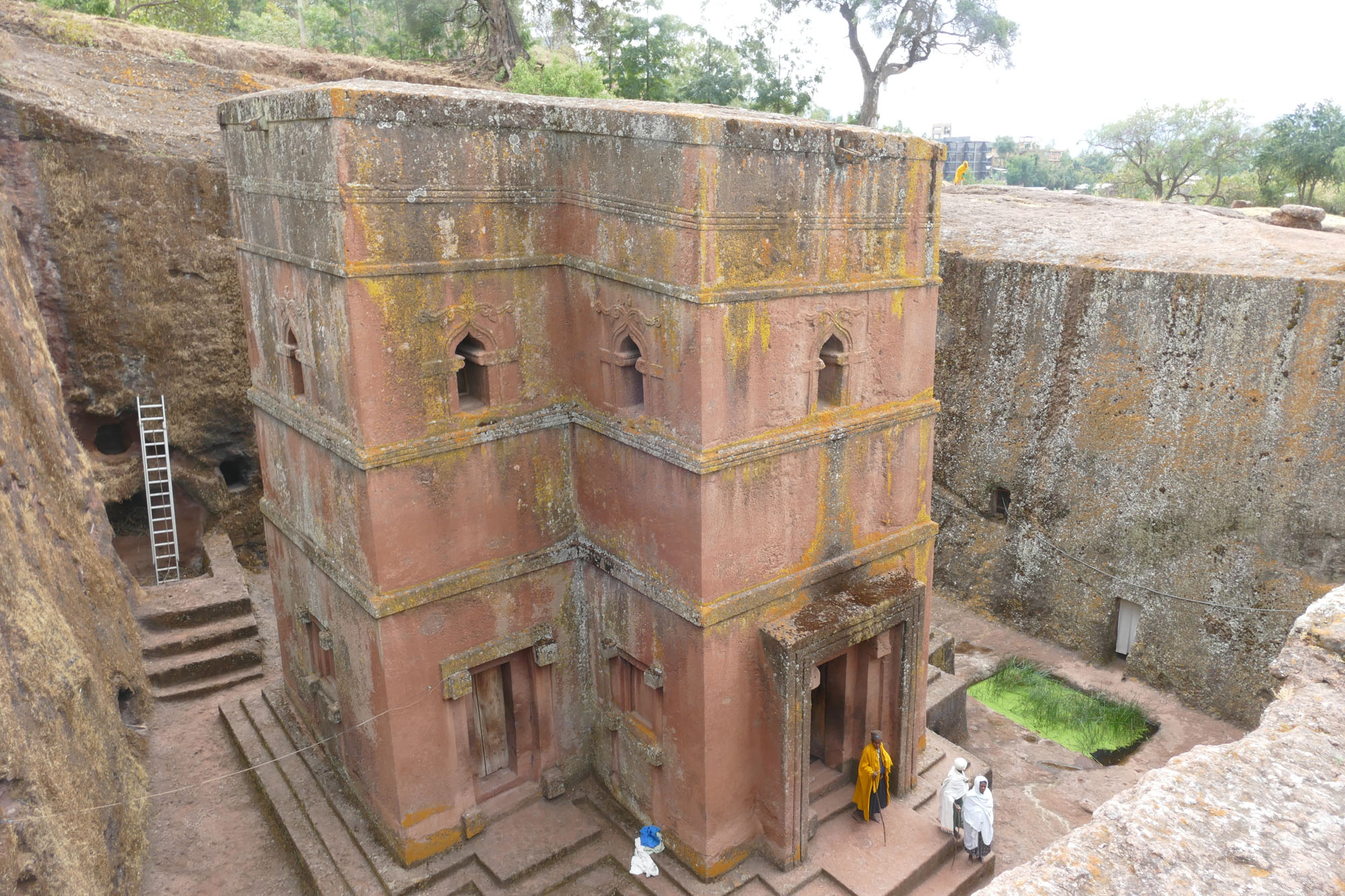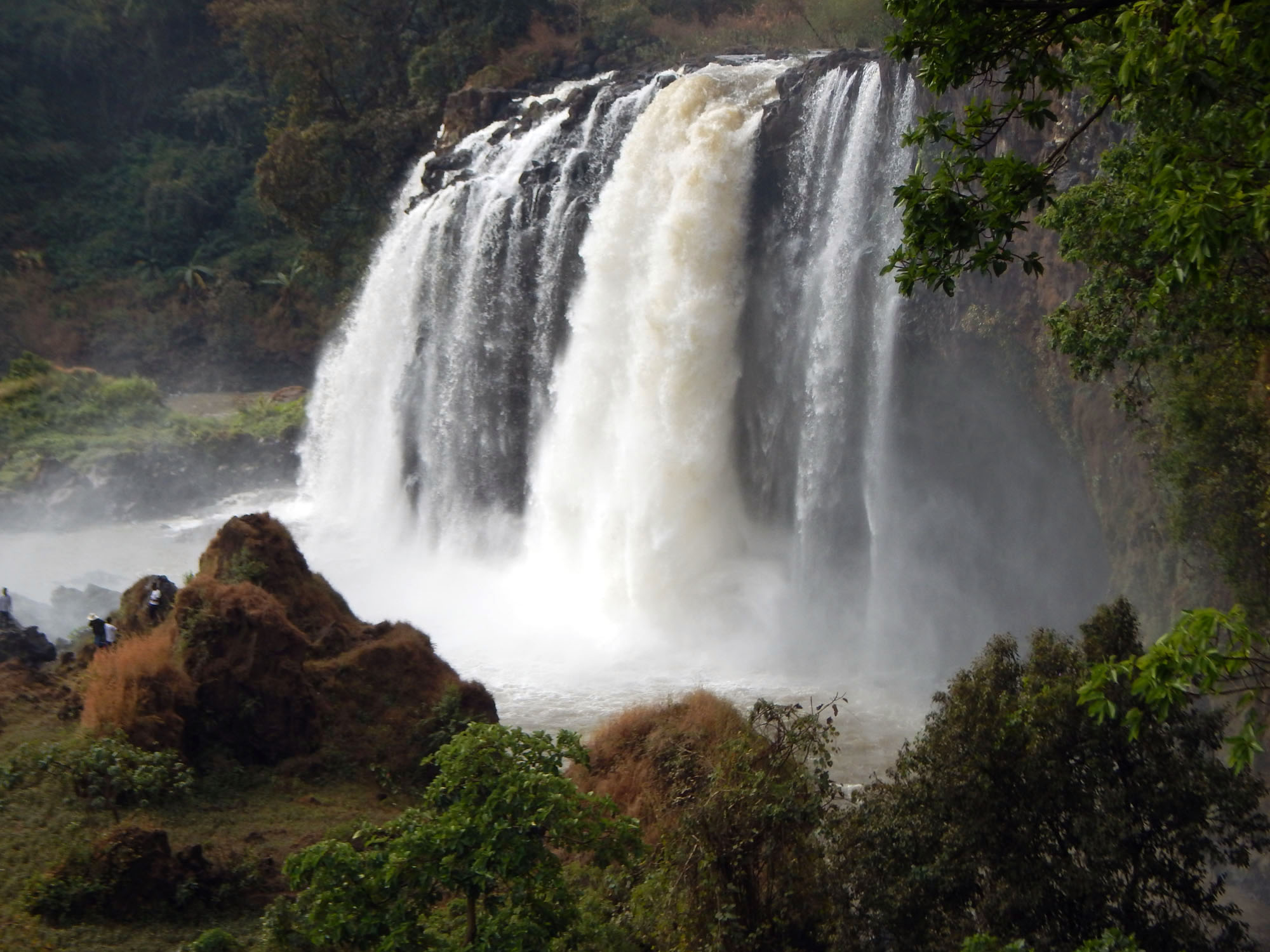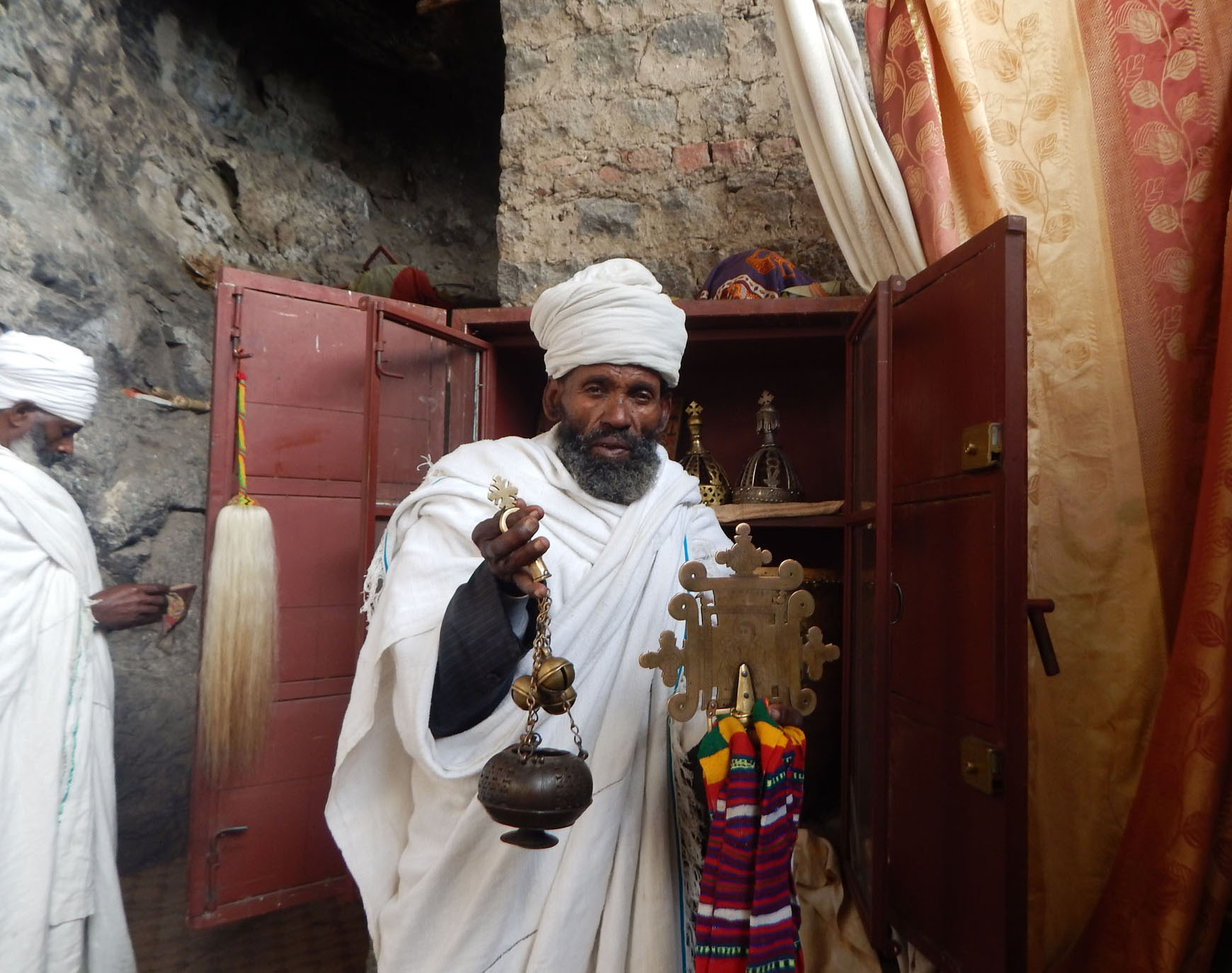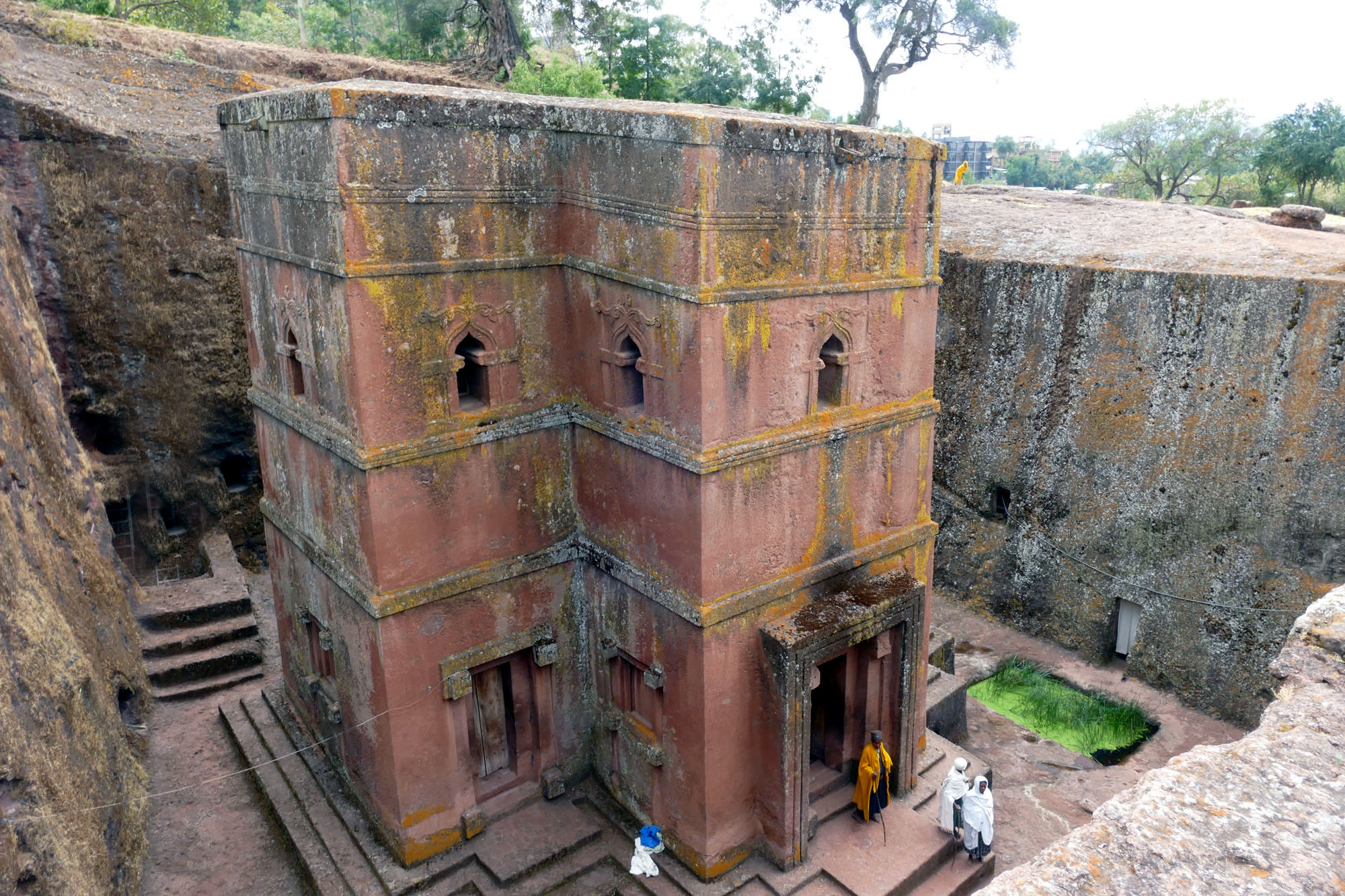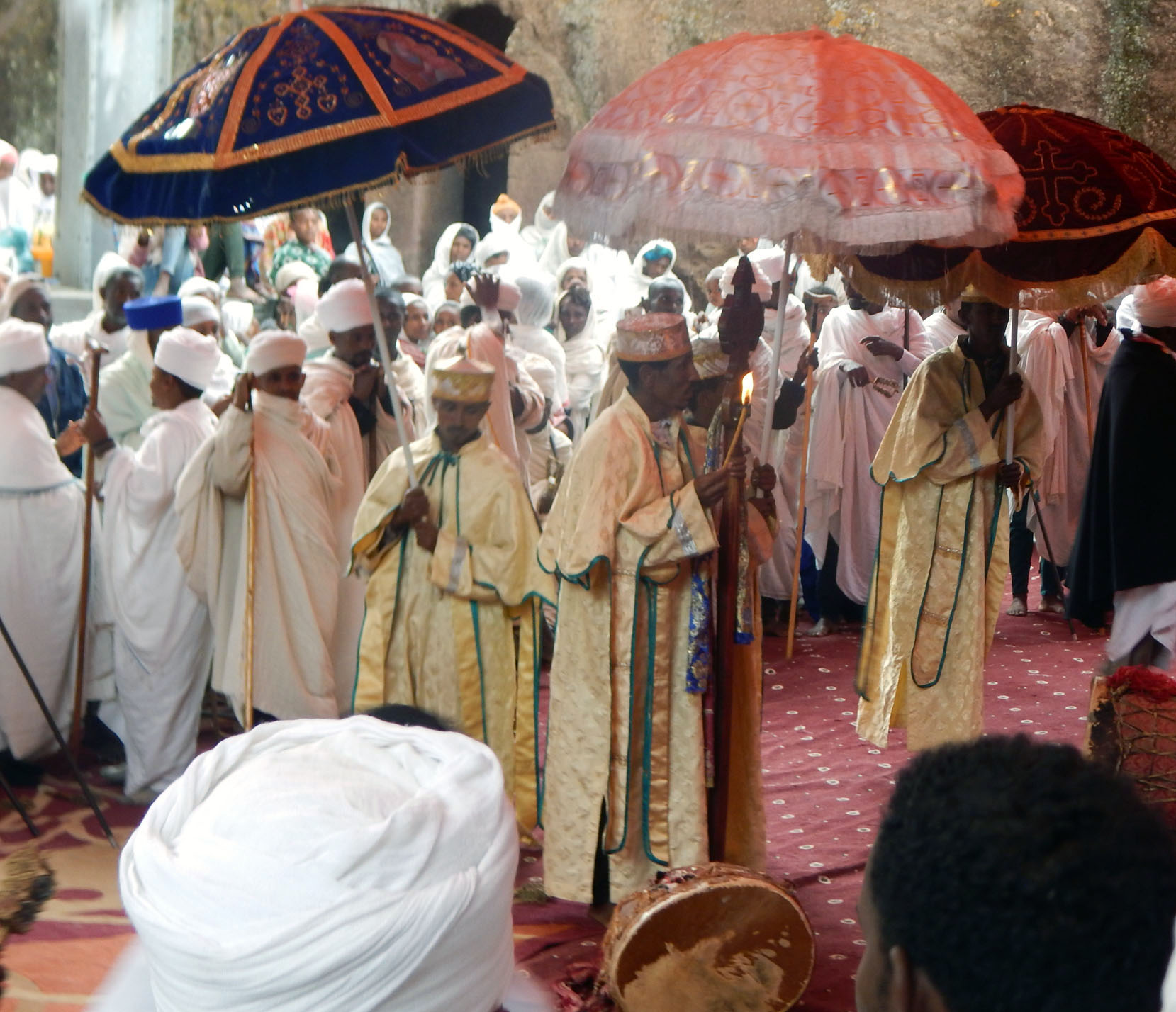Text and photos by James and Muriel Rosenfeld
Vol. 16, No. 5/6
March/April, 2023
Landlocked Ethiopia, a deeply religious country, is located in the corner of the Horn of Africa. Amharic, the uniquely alphabet language has been passed down from Ge’ez, an ancient Ethiopian Semitic language that is still spoken during religious ceremonies. Founded in the 10th century BC, Ethiopia was ruled by an unbroken chain of emperors until 1974. Coptic Christian and Eastern Orthodox comprise 63 % of the population with the rest being Muslim.
The country lies at a high elevation with its capital, Addis Ababa, resting at 7,800 feet. We traveled to Ethiopia seeking a unique cultural experience, and we were not disappointed. Ethiopia is a country where many ancient rituals are still practiced. Visiting in December, 2022, the weather was dry and pleasant with the occasional rain. During our ten-day visit, we encountered very few foreign tourists known as Ferengis.
Coptic Christian Trinity Chapel in Addis Ababa is where the last emperor Haile Selassie, viewed as a living God, is buried along with his Empress. He was the last emperor in an unbroken line dating back more than 3,000 years. He reigned from 1930 to 1974, when he was killed by political opposition. Haile Selassie lived in what is now the Museum of Anthropology. There are exhibits and one can see his modest former bedroom and restroom.
Ethiopia’s most famous attraction are eleven rock hewn churches in Lalibela. Carved during the 12th century, iron tools were used to remove the earth surrounding the churches. Each roof is ground level that appear to be about 25 feet lower. The churches, with rough and uneven stairs, remain active sites of worship. Attending the festival of St. Mary’s, we found the ceremony fascinating with many followers singing, dancing and praying.
Bahir Dar, the capital city of Amhara Region, is located on the shores of Lake Tana. The Blue Nile emerges from Lake Tana before flowing over a large waterfall. There are 37 islands and sites with churches and monasteries on Lake Tana. Eastern Orthodox churches are circular. One walks in a circle to admire the many images depicted from the New Testament. At one church festival, we had a chance to try locally brewed beer and purchase organic coffee.
During a visit to the Blue Nile falls (180 feet high), we traveled a rutted dirt road for 30 miles. Following a short boat ride, we walked two scenic mountain view miles through fields where sugar cane was being harvested, cattle threshed grain, an oxen pulled a primitive plow. The falls were well worth the effort to get to them.
Yemrehanna Kristos is an 11th / 12th-century Ethiopian Orthodox church located in the Amhara Region. It is built from stone and wood in the architectural tradition of the ancient Kingdom of Aksum. Descending to the church is steep and unstable. We met the deacon who showed us ancient treasures. The site has a natural water supply dripping from the cliff top.
Ruins of five castles, built by emperors between the 17th and 18th centuries, are located in Gondar. A royalty swimming pool, with a castle in the middle, gets water from a nearby river. It is used for annual religious ceremonies including mass baptisms. One of its more modern churches is rectangular.
Harar, an ancient walled city, is the location of a major Muslim pilgrimage similar but smaller than Mecca, Medina and Jerusalem. While we enjoyed exploring the city, our most interesting experience was nightly feeding of African Spotted Hyenas, a 15th century ritual. The hyenas are named and trained. They eat meat from short sticks.
The village (population 500) of Awra Amba is located between Bahir Dar and Lalibela. It was founded in 1980 by Zumra Nuru, an illiterate dreamer. He questioned why people cannot live and work together peacefully. The people of Awra Amba work together diligently with discipline and self-confidence. Women have equal rights, and there is no sex-based labor division. The community is known for the care of its elderly, educating their children including orphans, as well as their colorful weavings. These practices make Awra Amba distinct from other Ethiopian communities.
If spicy suits your taste, Ethiopian food is delicious. Injera, made with teff flour sourdough is a small grain tart flatbread, is served with most food dishes. Silverware is not used for eating. Shiro, a stew or curry made from dried ground chickpeas and spices, was a favorite with us. Beef or lamb ribs, made from cubed beef or lamb, peppers, veggies, lemon juice, and other ingredients, are less spicy. Coffee is very important part of the economy in Ethiopia. During one ceremony, as incense burns, beans are roasted over charcoal them crushed in a mortar before being placed in hot water.
Ethiopian art is typically Byzantine Christian with icons of the Virgin and Child, and other apostles and saints. These icons, displayed since 400 AD, are rendered on wood, leather and metal surfaces. Ethiopian icons are unique from others because their faces have dark complexions with distinct almond eyes.
Ethiopia is a unique cultural trip, no fast-food restaurants or franchises. We used Awaze Tours. And we recommend the experience to anyone physically able with an exotic palate. An adventurer who, can tolerate some very standard accommodations, and slow table service.

